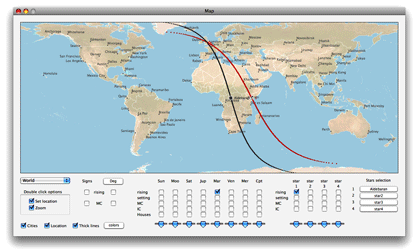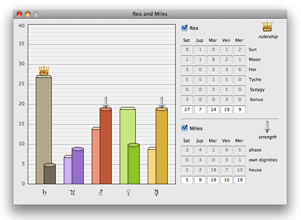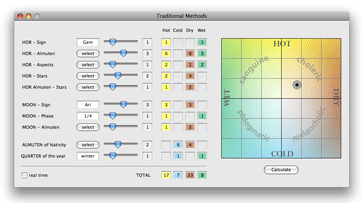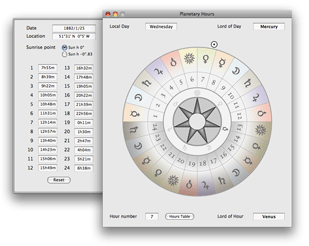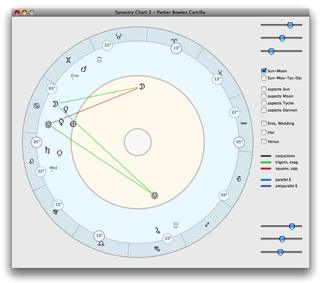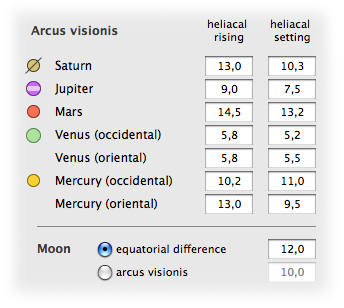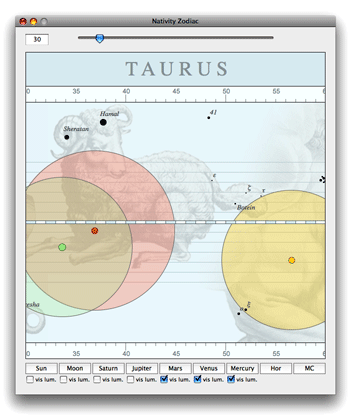 General Features General Features
|
| Astrocartography maps Geographical maps of the rising, culmination and setting of planets, stars and zodiacal degrees, with their transits in the 12 houses.
|
Almuten Almuten of the nativity according to the method of Ibn Ezra; Rex and Miles: the method developed in the school of Cielo e Terra, according to Gerolamo Vitali’s reasonings (Seventeenth century), who recommended to find different rulers, one on the hylegiacal places and the other according planetary strength.
|
| Temperament Traditional methods: assessment of the four qualities (hot, cold, dry, wet), depending on the conditions of the moon, the horoscope and their rulers.
|
Planetary Hours Chart and table of the 24 planetary hours, ruler of the day and ruler of the hour.
|
| Moon phases and eclipses Table of lunar phases (new moons, full moons and quarters), all the solar and lunar eclipses, the eclipse types and the maximum magnitude. |
Calendars Lunar calendar, applications and separations of the Moon; calendar of planets (motion, visibility and declination). Dodekatemoria |
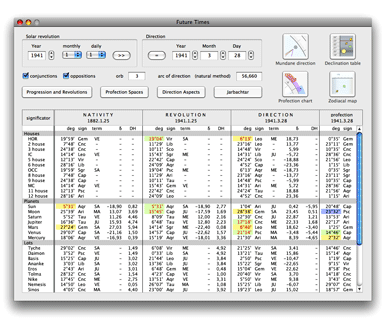 Future times Future times
|
|
| Synastry Bi-wheel (two concentric charts selected by the user and independent from the main one) and synastry grid of mutual aspects, with user-defined orbs.
|
Visibility of the planets The condition of visibility or invisibility of planets, according to the arcus visionis of Schoch (1927), editable in the Preferences Window. Two options for the Moon: equatorial difference or arcus visionis.
|
Phαsis Basic

